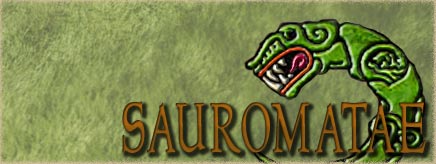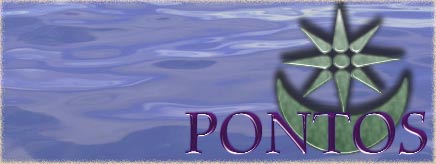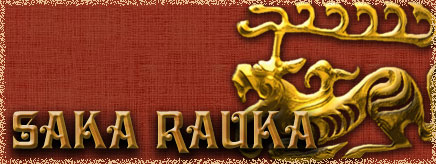Greetings Europa Barbarorum II Fans!
First of all I would like to express a big thank you to everyone who has contributed/continuing to contribute to the Province Descriptions.
However, if you wish, you can help us even more by contributing to the Trade Resource Descriptions.
We are still missing descriptions for the following trade resources:
Gold
Silver
Iron
Livestock
Gems
Quarry
Slaves
Honey
Lead
Olives
Copper
Salt
Pitch
Please be aware that the EBII historians may add details to these descriptions (having had a brief look at the missing descriptions a few ideas have come to mind) but we need your help as these descriptions can be time consuming and, in an effort to make more progress with EBII, our historians would prefer to focus on their respective factions.
If you would like to assist please let us know what trade resource you would like to work on (unlike the province descriptions it won't hurt to have more than one person looking at a trade resource).
Classical sources like Strabo, Pliny, Ptolemy and Arrian are good places to get information, but please be aware that Trade Resource Descriptions should not be too regionalised; EBII covers a wide area and it would not be very good to have a trade description for, let's say, Iron which only dealt with the iron of Athens or India. Your descriptions should be as wide ranging as possible.
As a rough guide, here are the current descriptions for Special Dyes and Elephants/Ivory:
Special Dyes - This area produces special dyes, like Tyrian purple, woad or indigo. Some regions like India, Kanaan and Pretannike are known to have the natural resources (like murex) to produce important quantities of exotic dye that is very valuable as a trade resource.
Historically, the wearing of dyed clothing, at least in most societies, was an indicator of wealth, especially if you wore multicoloured clothes. Simple white clothes were easy to produce. The vast majority of clothes from this period were made of cloth, which is naturally white. Bleeching to increase the whiteness of the fabric could also be achieved, at least in warmer climes, by simply exposing the fabric to the sun for extended periods of time. By contrast, dyeing required effort, time, and in many cases, money. All the dyes used in this period came from animals and plants. Their production and application required time. To be able to wear dyed clothes, and multicoloured ones at that, announced to the world that you had the time and money to be able to produce and purchase such items. Diodorus described the Gallic dress sense as “striking” and noted the Gallic preference for brightly coloured shirts and stripped cloaks. There were of course some exceptions to the rule that dyed clothes indicated wealth. For example the Roman toga and Greek chiton had very little dye (in the case of Roman consuls only an inner lining of purple was dyed into the fabric), in these cases it was the material and fold of the fabric which announced the wearers wealth.
Dyeing was performed using large basins or vats into which the dyes were poured and the cloth worked. Vats such as this continue to be used in North Africa and other regions which have not industrialised. The variety of colours which sites such as these can produce is incredible, but in antiquity there was one colour which was superior to all; purple. Later Roman legionaries and provincial authorities would attempt to produce purple by mixing red and blue dyes, however if you were an aristocrat in any society there was only one, official, source of purple; murex shells. The murex is a predatory sea snail, the shell of which can be ground to produce an exquisite purple. In antiquity one group of people held a monopoly on the trade in murex purple; the Phoenicians. The Phoenicians were probably the first people to farm an animal on a scale which today we would call industrial. They kept murex snails in ceramic jars and produced the dye at dedicated sites so large that Tyre and Sidon stank of the dyeing process. Archaeological evidence has shown that each jar contained a high number of murex snails, with many shells showing evidence of being eaten by other murex snails. Such indicators are common in modern animals which are housed in cramped and stressful conditions. Indeed the Phoenician monopoly of the murex purple trade was so great, that our word for Phoenician actually comes from the Greek word for purple.
and
Elephants / Ivory - This area has significant numbers of elephants, which can be either tamed and used for war, or killed for their highly valued ivory tusks. Libya, Neilos (Egypt? Kush?), India and Syria can each provide their own varieties of these beasts, but every breed is different and has its own peculiarities.
Historically, although the last European species of elephant, the woolly mammoth, became extinct at the end of the last Ice Age (although a small population of dwarf woolly mammoths would continue to survive until c. 1700 BC on Wrangel Island, Russia), all the non-island subspecies of Asian and African elephants were still extant by the start of EBII's timeframe. These included the now extinct North African forest elephant and the Syrian elephant, a western population of the Asian elephant which continued to survive in Syria, Anatolia and Mesopotamia until c. 100 BC. Elephants had two primary uses during this period: they were a source of ivory (the other main source being the walrus) and were used as mounts for war. Ivory, being malleable, easy to carve and having an attractive colour was highly sought after as a decorative material. Perhaps the most notable use of ivory was at the statue of Zeus at Olympia. The body of the god, which was constructed out of ivory and clothed in gold plated copper, was approximately 13 metres high and it is theorised that in order to form his ivory into sheets the architect, Phidias, soaked it in vinegar.
The other, and more famous, use of elephants was as war mounts. As a general rule the Seleukids and Mauryans employed Indian elephants (the Mauryans supplying the Seleukids with elephants as a result of a treaty between Seleukos I and Chandragupta Maurya), whilst the Ptolemaioi and Carthaginians made use of the North African forest subspecies. The difference in size between these two subspecies is noted by Polybius in his description of the Battle of Raphia in 217 BC where he describes how the larger Seleukid elephants routed their smaller Ptolemaic opponents. Even though the Ptolemaioi and Carthaginians used African elephants it must be remembered that these were of the North African subspecies, and not of the much larger savannah type. It is unclear whether or not the Syrian (west Asian) subspecies of elephant were used in battle. The species was likely still extant until the 1st century BC and Hannibal is recorded as having used an elephant called Surus. However, the Seleukid kings are recorded by Strabo and Polybius as having made use of Indian elephants. Whether this was because of the Indian elephants' reputation or whether these animals were imported due to a scarcity of Syrian elephants remains unclear. Similarly unclear are the methods used to capture elephants. Unlike other species, such as dogs, it is simply not possible to remove an elephant calf from its mother and raise it due to the fact that elephants have a lengthy weaning period and, as animals of higher intelligence, they tend to suffer from conditions such as depression. One story describes mahouts in Africa climbing onto the hind leg of a mother elephant and using a hatchet to hack at her leg. The mahout team would then lead the calf away and the now partially disabled mother would follow, thereby ensuring the survival of the calf. How widespread this method of elephant capture was is unclear.




 donated by ARCHIPPOS for being friendly to new people.
donated by ARCHIPPOS for being friendly to new people. donated by Tellos Athenaios as a welcome to Campus Martius
donated by Tellos Athenaios as a welcome to Campus Martius
 Reply With Quote
Reply With Quote


 ), the descriptions can be extremely long; some of the province descriptions, for example, are very big. However, it is best to keep them to a similar size. What you have done so far is fine.
), the descriptions can be extremely long; some of the province descriptions, for example, are very big. However, it is best to keep them to a similar size. What you have done so far is fine.







Bookmarks